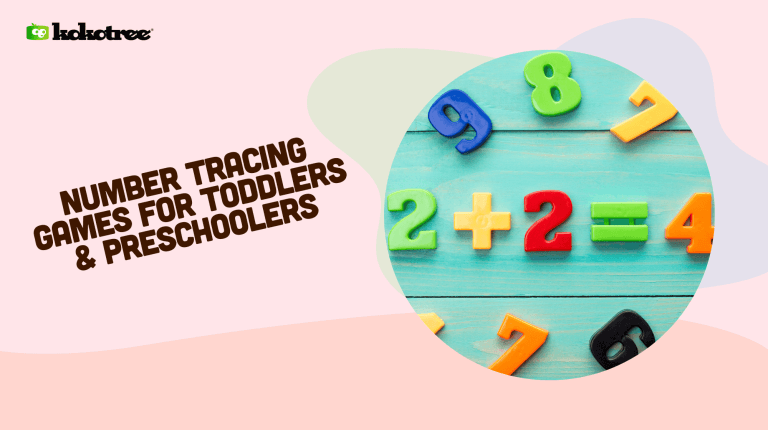

Written by: Kokotree
Updated:

Tracing numbers is more than just drawing. It’s the foundation of mathematics for young minds. With the digital age upon us, number tracing games have taken on exciting new dimensions, transitioning from paper and pen to interactive screens. Let’s dive into some delightful number-tracing games and helpful information perfect for teaching preschool math.
Numbers are everywhere, from the digits on a clock to the price tags in a store. For children, understanding numbers is like acquiring a new language, unlocking the world’s mysteries.
Here’s why tracing these numbers holds paramount importance:
For ages 2-6. They watch and play for 20 minutes. You get a break.
⭐ 5,000+ parents get daily breaks with Kokotree.
Try it Free →Works in 30 seconds • No credit card • Cancel anytime
Beyond the visible act of tracing numbers, there’s a world of cognitive development happening inside a child’s brain:
In our tech-centric world, it’s vital to strike a balance between hands-on activities and digital learning. While traditional games help with tactile and physical development, digital apps offer interactive animations and instant feedback, making learning numbers an engaging experience.
Kokotree’s learning app brings the best of number tracing to the fingertips of toddlers and preschoolers. Here’s how it stands out:
In the realm of early childhood education, number tracing worksheets have stood the test of time as reliable educational tools. Let’s unpack their undeniable benefits:
In the digital age, while apps and online games are gaining traction, number tracing 1-10 worksheets remain irreplaceable. They blend the tactile experience of writing with the cognitive benefits of number recognition, ensuring a holistic approach to numerical literacy for toddlers and preschoolers.
Mastering the art of number tracing is a journey, and every journey has its milestones. Let’s embark on a step-by-step exploration of tracing numbers, from the simplicity of the number 1 to the double-digit realm of number 10.
Each number has its unique charm and set of challenges. As children trace each number, they not only learn their shapes but also embrace the stories and values each number represents. Encourage kids to trace, repeat, and familiarize themselves with each figure, setting a solid foundation for their numerical journey.
Parental involvement is crucial for a child’s development, especially when it comes to foundational skills like number tracing. Here are detailed strategies to enhance this involvement:
Children have an innate love for stories, and numbers provide a perfect narrative. Enhance the tracing experience through:
In this digital age, tactile experiences are invaluable. Introduce these tools to make tracing more hands-on:
By integrating these techniques and tools, number tracing becomes a comprehensive, enriching, and enjoyable experience for both parents and children.
Number tracing is a vital, foundational skill for toddlers and preschoolers, paving the way for future mathematical endeavors. With both traditional and digital games available, the journey of understanding numbers has never been more exciting!



